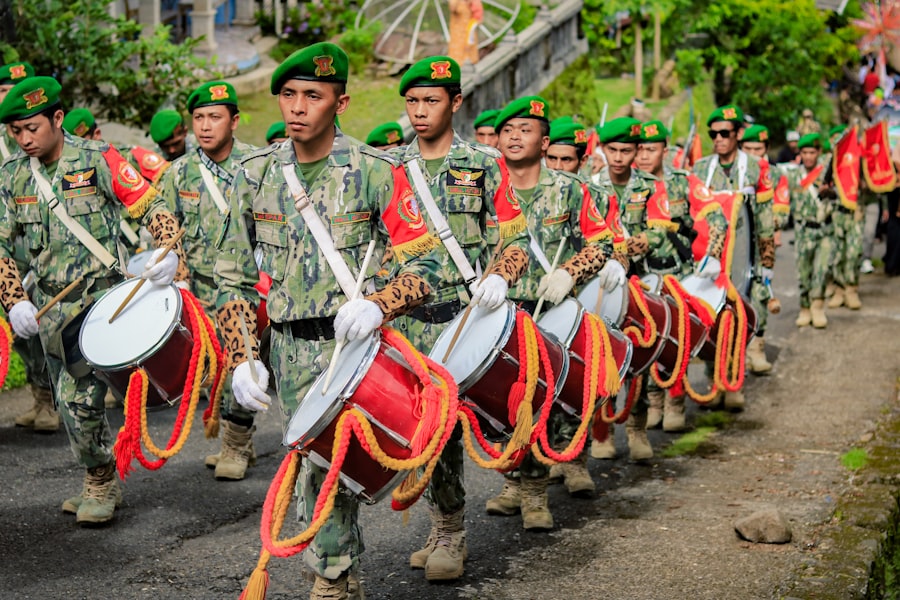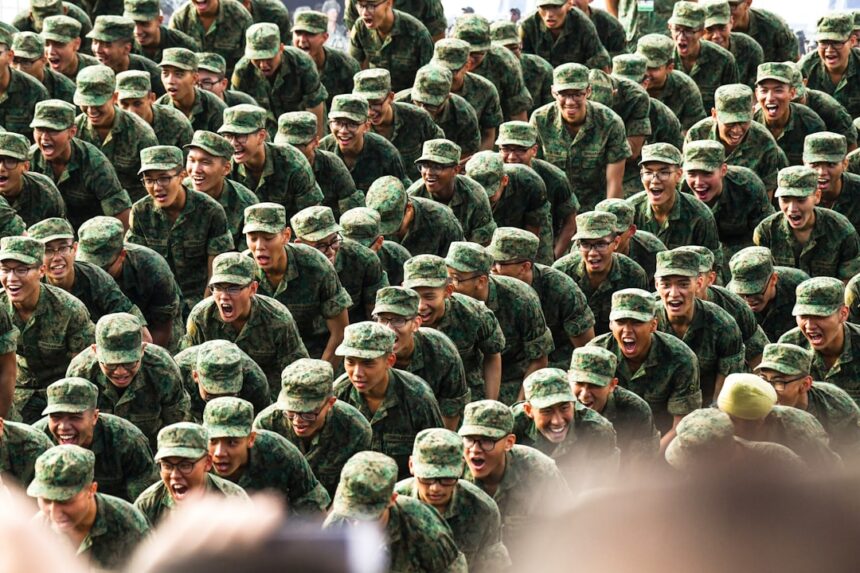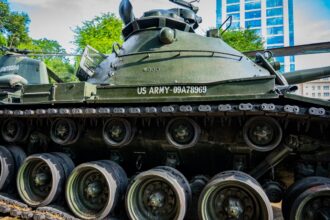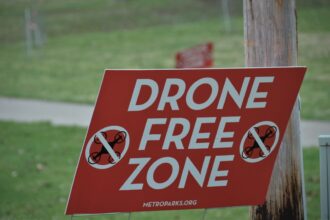The 1980s marked a pivotal decade for the United States military, characterized by a significant overhaul aimed at addressing the evolving geopolitical landscape. As the Cold War continued to cast a long shadow over international relations, the U.S. recognized the urgent need to modernize its armed forces.
This period of revamping was not merely a response to external threats but also a reflection of internal assessments regarding military readiness and capability. The decade saw a concerted effort to enhance the effectiveness of the military through strategic investments, technological advancements, and comprehensive reforms. The military revamping of the 1980s was driven by a complex interplay of factors, including rising tensions with the Soviet Union and the emergence of new global challenges.
The U.S.
This multifaceted approach laid the groundwork for a transformation that would influence military strategies for years to come, shaping the very nature of American defense policy in the post-Cold War era.
Key Takeaways
- The 1980s saw a significant revamping of the US military in response to Cold War tensions and the need for modernization.
- The Reagan administration pursued a comprehensive approach to military revamping, including the Strategic Defense Initiative (SDI) and modernizing the Army, Navy, and Air Force.
- SDI, also known as “Star Wars,” had a major impact on military modernization by focusing on missile defense and space-based weaponry.
- Technological advancements in military equipment and weaponry played a crucial role in modernizing the Army, Navy, and Air Force during this period.
- The revamping of the US military in the 1980s had a lasting impact on national security and influenced future military strategies, despite facing criticisms and controversies.
Cold War tensions and the need for military modernization
The Cold War was characterized by an intense rivalry between the United States and the Soviet Union, with both superpowers vying for global influence. By the late 1970s and early 1980s, this rivalry had reached a critical juncture, prompting U.S. leaders to reassess their military capabilities.
The Soviet Union’s aggressive posture, exemplified by its invasion of Afghanistan in 1979, underscored the necessity for a robust military response. The U.S. recognized that its existing military infrastructure was outdated and ill-equipped to confront the challenges posed by a technologically advancing adversary.
In light of these tensions, military modernization became imperative. The U.S. sought to enhance its deterrent capabilities while ensuring that its forces were prepared for a range of potential conflicts.
This included not only conventional warfare but also asymmetric threats that could arise from guerrilla tactics or proxy wars. The urgency of this modernization effort was further amplified by public concerns over national security, as citizens increasingly demanded that their government take decisive action to protect American interests both at home and abroad.
The Reagan administration’s approach to military revamping

The election of Ronald Reagan in 1980 heralded a new era in U.S. defense policy, marked by a commitment to rebuilding and revitalizing the military. Reagan’s administration viewed military strength as essential to countering Soviet aggression and restoring American prestige on the global stage.
His approach was characterized by a significant increase in defense spending, which aimed to reverse the decline in military readiness that had occurred during the previous decade. This ambitious agenda sought not only to modernize existing forces but also to expand them significantly. Reagan’s vision for military revamping encompassed a broad range of initiatives, from enhancing conventional forces to investing in advanced technologies.
He believed that a strong military would serve as a deterrent against potential adversaries while also providing the United States with greater leverage in diplomatic negotiations. This philosophy was rooted in the belief that peace could be achieved through strength, leading to an era of heightened military preparedness that would define U.S. defense policy throughout the 1980s.
Strategic Defense Initiative (SDI) and its impact on military modernization
| Metrics | Data |
|---|---|
| Year of Initiation | 1983 |
| Estimated Cost | 30 billion |
| Number of Tests Conducted | more than 40 |
| Impact on Military Modernization | Shifted focus to missile defense technology |
| International Response | Controversial and led to arms race concerns |
One of the most ambitious components of Reagan’s military revamping was the Strategic Defense Initiative (SDI), announced in 1983. This program aimed to develop a missile defense system capable of intercepting and destroying incoming ballistic missiles before they could reach their targets. SDI represented a significant shift in U.S.
defense strategy, moving away from the doctrine of mutually assured destruction (MAD) toward a proactive defense posture. The impact of SDI on military modernization was profound.
While SDI faced skepticism from critics who questioned its feasibility and cost-effectiveness, it nonetheless catalyzed discussions about missile defense and prompted other nations to consider their own defense strategies. The initiative also underscored the importance of technological superiority in modern warfare, influencing subsequent military planning and procurement decisions.
Modernizing the Army, Navy, and Air Force
The revamping of the U.S. military during the 1980s extended across all branches: the Army, Navy, and Air Force underwent significant modernization efforts aimed at enhancing their operational capabilities. For the Army, this meant upgrading equipment and improving training programs to ensure that soldiers were prepared for both conventional and unconventional warfare scenarios.
The introduction of advanced armored vehicles and improved artillery systems exemplified this commitment to modernization. The Navy also saw substantial investments aimed at expanding its fleet and enhancing its capabilities in naval warfare. The construction of new aircraft carriers and submarines reflected a strategic emphasis on maintaining maritime superiority in an increasingly contested global environment.
Meanwhile, the Air Force focused on developing advanced fighter jets and bombers equipped with cutting-edge technology, ensuring that American air power remained unmatched on the battlefield.
Technological advancements in military equipment and weaponry

Technological advancements played a crucial role in the military revamping efforts of the 1980s, fundamentally altering the landscape of warfare. The U.S. invested heavily in research and development, leading to breakthroughs in various areas such as precision-guided munitions, stealth technology, and advanced communication systems.
These innovations not only enhanced combat effectiveness but also reduced collateral damage, allowing for more strategic engagement in conflict scenarios. The introduction of precision-guided munitions revolutionized airstrikes, enabling forces to strike targets with unprecedented accuracy. Stealth technology, exemplified by aircraft like the F-117 Nighthawk, allowed U.S.
forces to penetrate enemy defenses undetected, changing the dynamics of aerial warfare. Additionally, advancements in communication systems improved coordination among different branches of the military, facilitating joint operations and enhancing overall effectiveness on the battlefield.
The role of military intelligence and surveillance in the 1980s
As military modernization progressed throughout the 1980s, intelligence and surveillance emerged as critical components of U.S. defense strategy. The ability to gather accurate information about enemy movements and capabilities became increasingly vital in shaping operational decisions.
The Reagan administration recognized that effective intelligence would provide a strategic advantage in both deterrence and combat scenarios. The establishment of advanced reconnaissance systems, including satellite surveillance and aerial reconnaissance platforms, allowed for real-time monitoring of potential threats. This emphasis on intelligence gathering not only improved situational awareness but also informed strategic planning at all levels of command.
As a result, military leaders were better equipped to make informed decisions regarding troop deployments and engagement strategies.
Reforms in military training and recruitment
In conjunction with technological advancements, reforms in military training and recruitment were essential components of the revamping process during the 1980s. Recognizing that modern warfare required highly skilled personnel capable of operating advanced equipment, the U.S. military implemented comprehensive training programs designed to enhance soldier readiness.
These programs emphasized not only technical proficiency but also adaptability in dynamic combat environments. Recruitment efforts were also revitalized during this period as the military sought to attract a diverse pool of talent capable of meeting evolving demands. Initiatives aimed at improving quality-of-life for service members and their families were introduced to enhance retention rates and foster a sense of commitment among personnel.
By focusing on both training and recruitment, the U.S. military aimed to build a force that was not only technologically advanced but also well-prepared for future challenges.
The impact of military revamping on national security
The extensive revamping of the U.S. military during the 1980s had far-reaching implications for national security. By modernizing its forces and investing in advanced technologies, the United States significantly enhanced its deterrent capabilities against potential adversaries.
This newfound strength contributed to a sense of stability within NATO and reassured allies who relied on American support for their own security. Moreover, the emphasis on intelligence gathering and surveillance allowed for more informed decision-making regarding foreign policy and military engagements. As tensions with the Soviet Union persisted, this enhanced capability provided U.S.
leaders with greater confidence in their ability to respond effectively to emerging threats. Ultimately, the revamping efforts contributed to a shift in global power dynamics that would shape international relations for decades to come.
Criticisms and controversies surrounding the revamping of the US military
Despite its ambitious goals, the revamping of the U.S. military during the 1980s was not without its criticisms and controversies. Detractors argued that increased defense spending diverted resources away from essential domestic programs such as education and healthcare.
Critics also raised concerns about the potential for an arms race with the Soviet Union, fearing that heightened militarization could exacerbate tensions rather than promote stability. Additionally, some questioned the effectiveness of specific initiatives like SDI, arguing that it represented an unrealistic approach to missile defense that could not be effectively implemented within budgetary constraints. These criticisms sparked debates about priorities within national security policy and raised fundamental questions about how best to balance defense needs with social responsibilities.
Legacy of military revamping in the 1980s and its influence on future military strategies
The legacy of military revamping in the 1980s continues to resonate within contemporary defense strategies and policies. The emphasis on technological superiority established during this period laid the groundwork for future innovations in warfare, influencing how militaries around the world approach conflict today. The lessons learned from this era have informed subsequent generations of military leaders as they navigate an increasingly complex global landscape.
Moreover, the focus on intelligence gathering and surveillance has become even more pronounced in modern warfare, reflecting an understanding that information is a critical asset in achieving strategic objectives. As new challenges emerge—ranging from cyber threats to asymmetric warfare—the foundational changes initiated during the 1980s remain relevant as militaries adapt to meet evolving demands while ensuring national security remains paramount. In conclusion, the revamping of the U.S.
military during the 1980s represented a transformative period marked by significant investments in modernization, technology, and strategic thinking. While it faced criticisms and challenges along the way, its impact on national security policy continues to shape contemporary military strategies today.
In the 1980s, the restructuring of the US military was a pivotal moment in history, marked by significant changes in strategy, technology, and organization. This period saw a shift towards a more agile and technologically advanced force, adapting to the evolving geopolitical landscape of the Cold War era. For a deeper understanding of the strategic decisions and their long-term impacts, you can explore a related article on this topic by visiting In The War Room. This resource provides valuable insights into the military strategies and innovations that defined the era.
WATCH THIS! From Tehran to Blackwater: The Real Story
FAQs
What was the purpose of restructuring the US military in the 1980s?
The purpose of restructuring the US military in the 1980s was to modernize and improve the efficiency and effectiveness of the armed forces in response to changing global threats and geopolitical dynamics.
What were some key changes made during the restructuring of the US military in the 1980s?
Some key changes made during the restructuring of the US military in the 1980s included increasing investment in advanced technology and weaponry, reorganizing and streamlining the command structure, and enhancing the readiness and capabilities of the armed forces.
How did the restructuring of the US military in the 1980s impact its overall capabilities?
The restructuring of the US military in the 1980s significantly enhanced its overall capabilities by modernizing its equipment and technology, improving its strategic and tactical readiness, and optimizing its organizational structure for more efficient and effective operations.
What were some of the challenges faced during the restructuring of the US military in the 1980s?
Some of the challenges faced during the restructuring of the US military in the 1980s included budget constraints, resistance to change within the military establishment, and the need to balance competing priorities and demands for resources.
What long-term effects did the restructuring of the US military in the 1980s have?
The restructuring of the US military in the 1980s had long-term effects, including positioning the armed forces to better address emerging threats and challenges, establishing a foundation for continued modernization and innovation, and shaping the military’s role in global security for decades to come.




